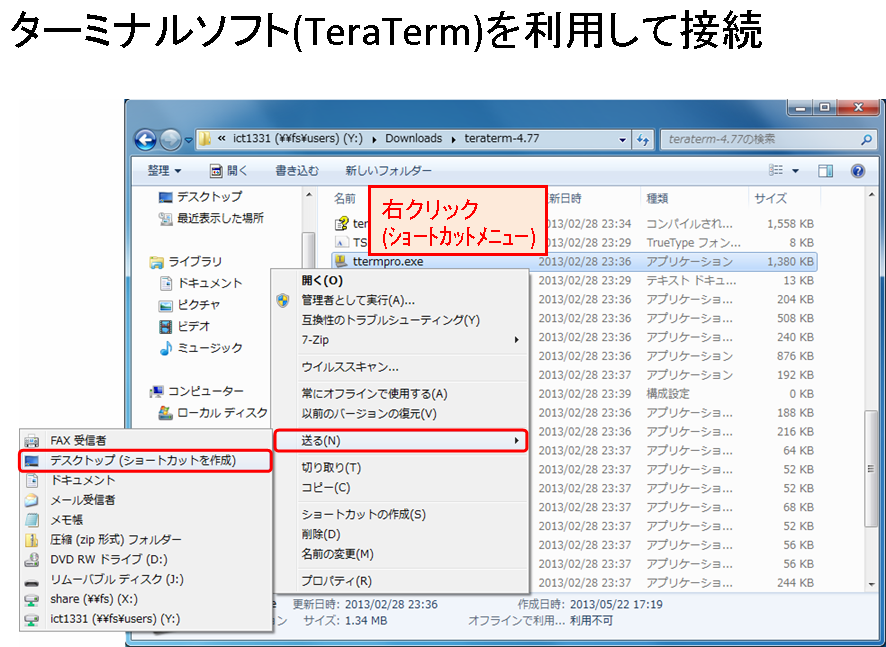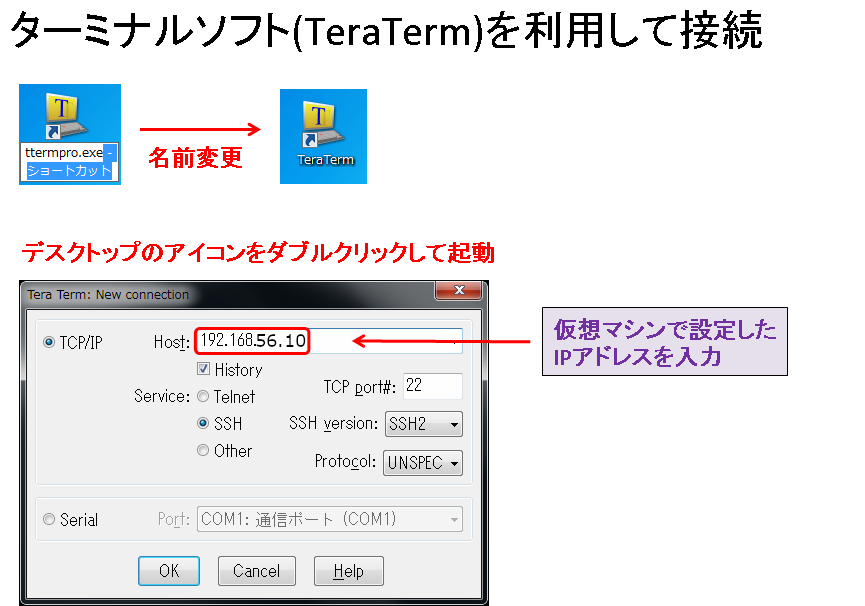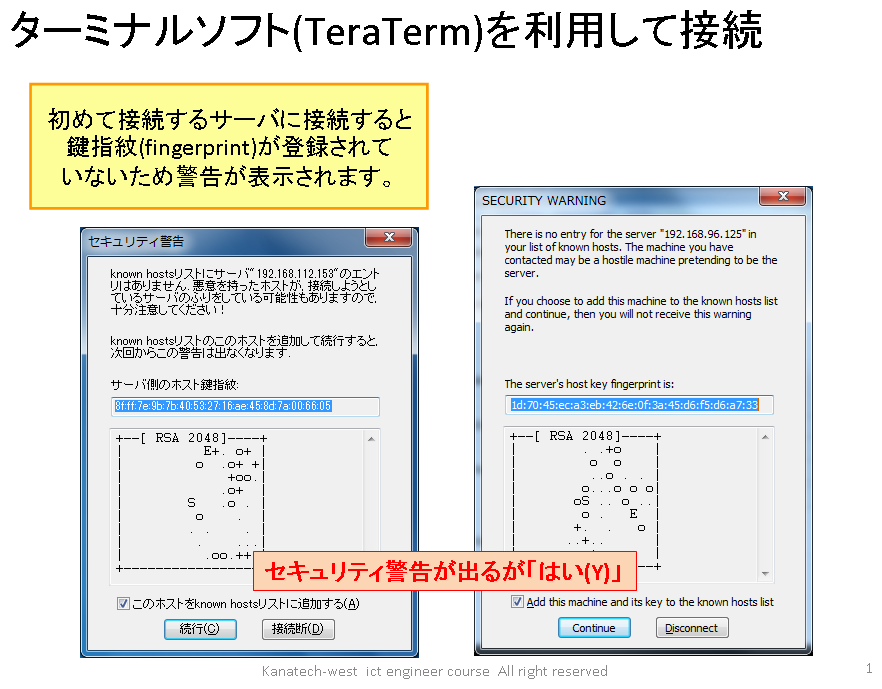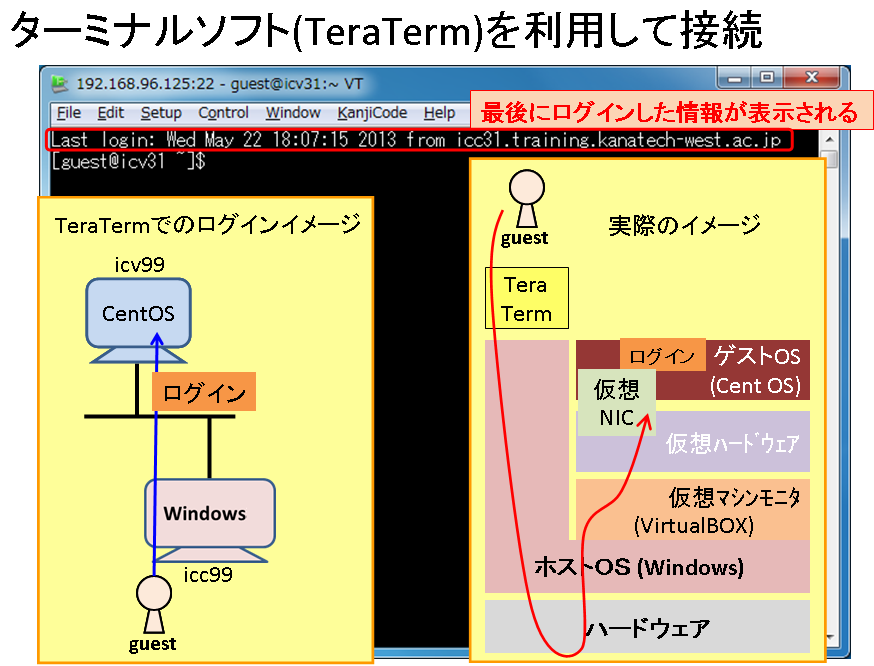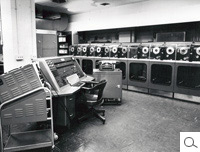115.●コンピュータ概論
コンピュータの動作原理
1945 |
プログラム内蔵方式
プログラムを外部から記憶装置に与えて(交換可能な)汎用のハードウエアで実行する方式
(ソフトウエアとハードウエアの概念つまりコンピュータの概念の誕生)

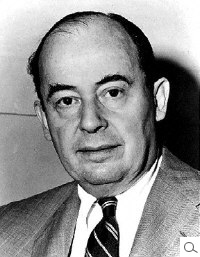
John von Neumann wrote "First Draft of a Report on the EDVAC" in which he outlined the architecture of a stored-program computer. |
コンピュータの黎明期
1946 |
Electronic Numerical Integrator and Computer
ENIAC  Plug board and switches | In February, the public got its first glimpse of the ENIAC, a machine built by John Mauchly and J. Presper Eckert that improved by 1,000 times on the speed of its contemporaries. Start of project: 1943 Completed: 1946 Programmed: plug board and switches Speed: 5,000 operations per second Input/output: cards, lights, switches, plugs Floor space: 1,000 square feet Project leaders: John Mauchly and J. Presper Eckert. |
1951 |
UNIVersal Automatic Computer I
UNIVAC I | The UNIVAC I delivered to the U.S. Census Bureau was the first commercial computer to attract widespread public attention. Although manufactured by Remington Rand, the machine often was mistakenly referred to as the "IBM UNIVAC." Remington Rand eventually sold 46 machines at more than $1 million each.F.O.B. factory $750,000 plus $185,000 for a high speed printer. Speed: 1,905 operations per second Input/output: magnetic tape, unityper, printer Memory size: 1,000 12-digit words in delay lines Memory type: delay lines, magnetic tape Technology: serial vacuum tubes, delay lines, magnetic tape Floor space: 943 cubic feet Cost: F.O.B. factory $750,000 plus $185,000 for a high speed printer Project leaders: J. Presper Eckert and John Mauchly |
1964 |
System/360シリーズ
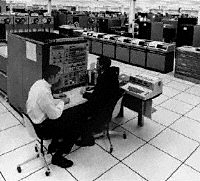 IBM System/360 | IBM announced the System/360, a family of six mutually compatible computers and 40 peripherals that could work together. The initial investment of $5 billion was quickly returned as orders for the system climbed to 1,000 per month within two years. At the time IBM released the System/360, the company was making a transition from discrete transistors to integrated circuits, and its major source of revenue moved from punched-card equipment to electronic computer systems. |
1965 |
DEC minicomuter
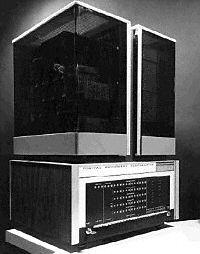 DEC PDP-8 | Digital Equipment Corp. introduced the PDP-8, the first commercially successful minicomputer. The PDP-8 sold for $18,000, one-fifth the price of a small IBM 360 mainframe. The speed, small size, and reasonable cost enabled the PDP-8 to go into thousands of manufacturing plants, small businesses, and scientific laboratories. |
UNIXとは
1969 |
Multi-user, Multi-tasking Operating System
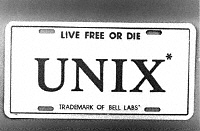 UNIX "license plate" | AT&T Bell Laboratories programmers Kenneth Thompson and Dennis Ritchie developed the UNIX operating system on a spare DEC minicomputer. UNIX combined many of the timesharing and file management features offered by Multics, from which it took its name. (Multics, a projects of the mid-1960s, represented the first effort at creating a multi-user, multi-tasking operating system.) The UNIX operating system quickly secured a wide following, particularly among engineers and scientists. |
商用UNIX(純然たるUNIX)
SystemV系 IBM(AIX) HP(HP-UX)-2016/03/22 ANAシステム障害 サンマイクロシステムズ(Solaris)
BSD系 MacOSX(FreeBSD UNIX に GUI SystemのAQUAを被せた)
UNIXクローンのLinux
オープンソースのUNIXライクなOS
(UNIXと同等の機能を提供することを目的に開発されたOS)
UNIXと似せた機能をソースから書いて無償で一から作り上げたOS
リーナスは、アンドリュー・タネンバウムの著作「Operating Systems: Design and Implementation」に書かれていた
「Minix」と呼ばれる学習システムのソースコードを大学での学習教材にしていた。
80386チップ搭載の自分専用のコンピューターをゲットしたリーナスはMinixのフロッピーディスクを手に入れ
Minixを自分専用に改良し、そのOSをLinus's Minix(リーナスのMinix)の造語として「Linux」と命名した。
1991 | ||
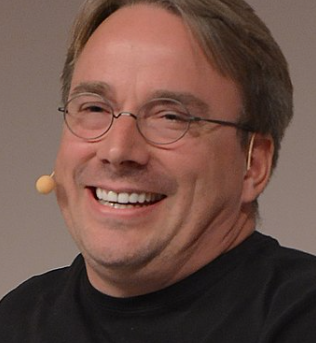 Linus Torvalds | Designed by Finnish university student Linus Torvalds, Linux was released to several Usenet newsgroups on September 17th, 1991. Almost immediately, enthusiasts began developing and improving Linux, such as adding support for peripherals and improving its stability. In February 1992, Linux became free software or (as its developers preferred to say after 1998) open source. Linux typically incorporated elements of the GNU operating system and became widely used. | |
FSF
フリーソフトウエア財団(Free Software Foundation)
1983年にリチャード・ストルーマン氏によってフリーソフトウエアを促進するために設立
自由な状態でという意味でのフリー
GNU
FSFのプロジェクト(GNUはUNIXではない)
UNIX互換環境をすべてフリーソフトウエアで実現すべく設立されたGnu's Not Unixプロジェクト
GPL
GNUのプロダクトは GNU General Public License(一般公衆利用許諾書)に基づき提供される
ソフトウエアの使用・複製・変更・再頒布などの自由を保証する
GPLのソフトウェアを使用して新たなソフトウェアを作成すると、そのソフトウェアもGPLで公開しなければならない可能性が高いです。特に、GPLソフトウェアを「リンク」する場合は注意が必要です。ライセンスの影響を受けたくない場合は、LGPLやMITライセンスのソフトウェアを利用する、またはGPLソフトと直接リンクしないように設計するとよいでしょう。
1983 | ||
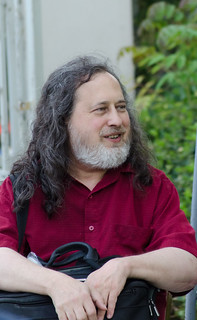 Richard Stallman | Richard Stallman announces GNU. Richard Stallman, a programmer at MIT’s Artificial Intelligence Lab, experienced a significant shift in attitudes during the late 1970s. Whereas the MIT hacker culture was one of sharing and openness, the commercial software world moved towards secrecy and access to source code became ever more restricted. Stallman set out to develop a free alternative to the popular Unix operating system. This operating system called GNU (for Gnu's Not Unix) was going to be free of charge but also allow users the freedom to change and share it. Stallman founded the Free Software Foundation (FSF) based on this philosophy in 1985. While the GNU work did not immediately result in a full operating system, it provided the necessary tools for creating Linux. The software developed as part of the GNU project continues to form a large part of Linux, which is why the FSF asks for it to be called GNU/Linux. | |
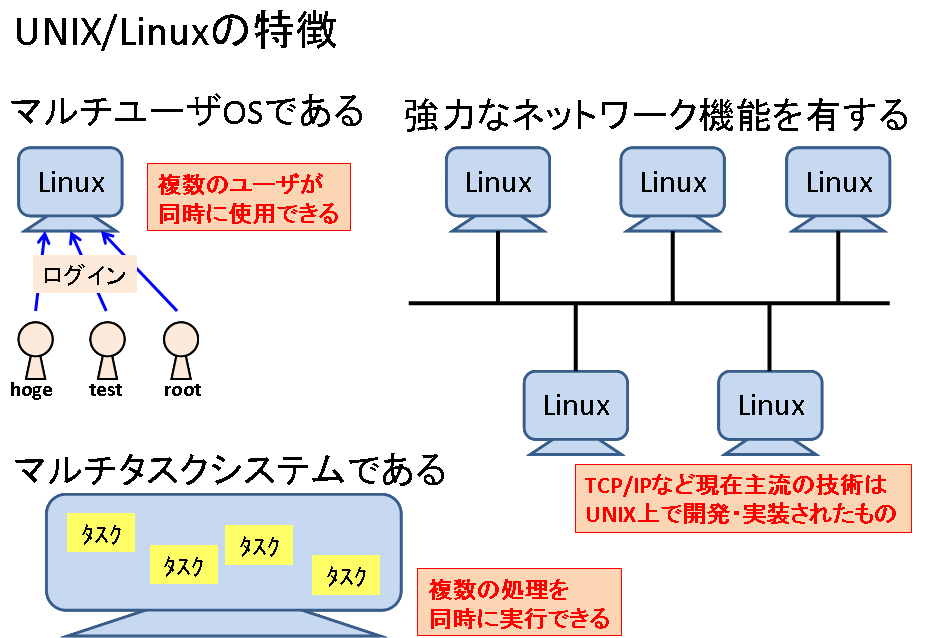
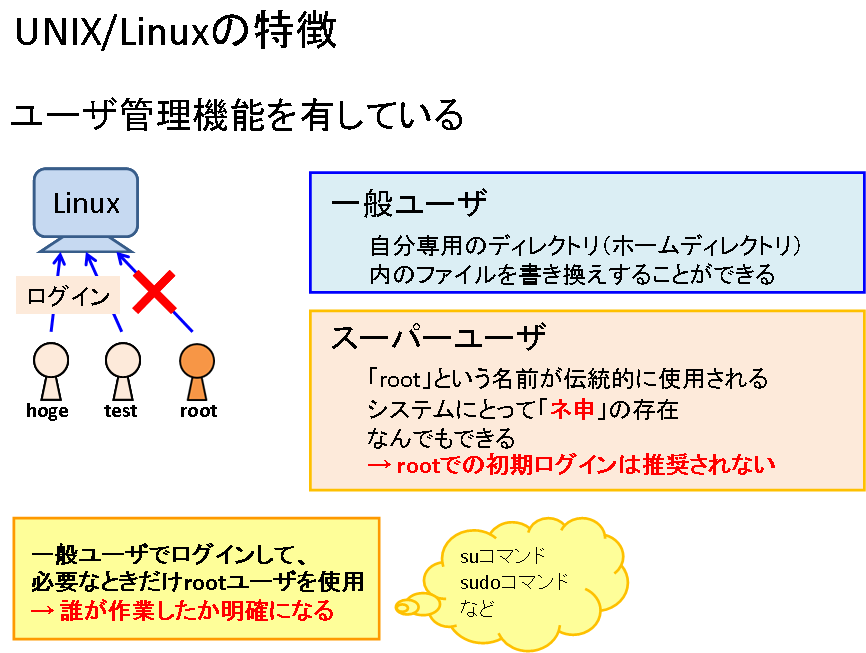
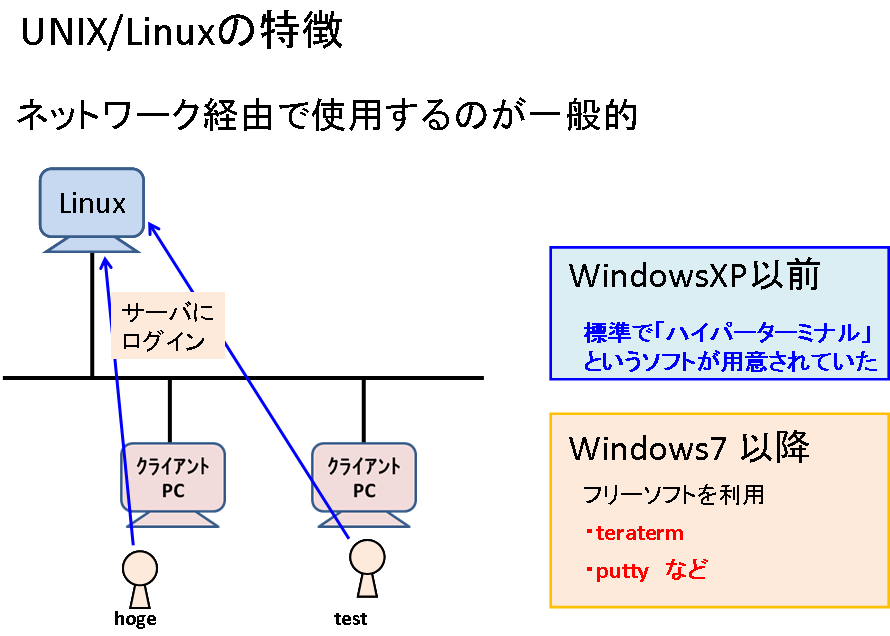
ターミナルソフトの場所
C:\2022VM\teraterm の中に ttermpro.exe があります
